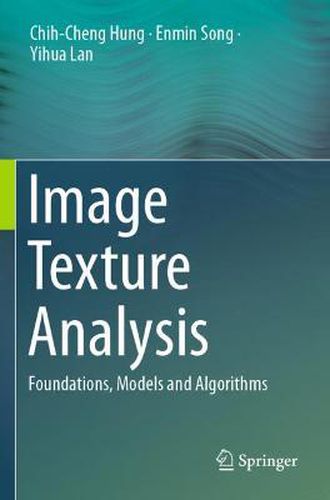Readings Newsletter
Become a Readings Member to make your shopping experience even easier.
Sign in or sign up for free!
You’re not far away from qualifying for FREE standard shipping within Australia
You’ve qualified for FREE standard shipping within Australia
The cart is loading…






This title is printed to order. This book may have been self-published. If so, we cannot guarantee the quality of the content. In the main most books will have gone through the editing process however some may not. We therefore suggest that you be aware of this before ordering this book. If in doubt check either the author or publisher’s details as we are unable to accept any returns unless they are faulty. Please contact us if you have any questions.
This useful textbook/reference presents an accessible primer on the fundamentals of image texture analysis, as well as an introduction to the K-views model for extracting and classifying image textures. Divided into three parts, the book opens with a review of existing models and algorithms for image texture analysis, before delving into the details of the K-views model. The work then concludes with a discussion of popular deep learning methods for image texture analysis.
Topics and features: provides self-test exercises in every chapter; describes the basics of image texture, texture features, and image texture classification and segmentation; examines a selection of widely-used methods for measuring and extracting texture features, and various algorithms for texture classification; explains the concepts of dimensionality reduction and sparse representation; discusses view-based approaches to classifying images; introduces the template for the K-views algorithm, as well as a range of variants of this algorithm; reviews several neural network models for deep machine learning, and presents a specific focus on convolutional neural networks.
This introductory text on image texture analysis is ideally suitable for senior undergraduate and first-year graduate students of computer science, who will benefit from the numerous clarifying examples provided throughout the work.
$9.00 standard shipping within Australia
FREE standard shipping within Australia for orders over $100.00
Express & International shipping calculated at checkout
Stock availability can be subject to change without notice. We recommend calling the shop or contacting our online team to check availability of low stock items. Please see our Shopping Online page for more details.
This title is printed to order. This book may have been self-published. If so, we cannot guarantee the quality of the content. In the main most books will have gone through the editing process however some may not. We therefore suggest that you be aware of this before ordering this book. If in doubt check either the author or publisher’s details as we are unable to accept any returns unless they are faulty. Please contact us if you have any questions.
This useful textbook/reference presents an accessible primer on the fundamentals of image texture analysis, as well as an introduction to the K-views model for extracting and classifying image textures. Divided into three parts, the book opens with a review of existing models and algorithms for image texture analysis, before delving into the details of the K-views model. The work then concludes with a discussion of popular deep learning methods for image texture analysis.
Topics and features: provides self-test exercises in every chapter; describes the basics of image texture, texture features, and image texture classification and segmentation; examines a selection of widely-used methods for measuring and extracting texture features, and various algorithms for texture classification; explains the concepts of dimensionality reduction and sparse representation; discusses view-based approaches to classifying images; introduces the template for the K-views algorithm, as well as a range of variants of this algorithm; reviews several neural network models for deep machine learning, and presents a specific focus on convolutional neural networks.
This introductory text on image texture analysis is ideally suitable for senior undergraduate and first-year graduate students of computer science, who will benefit from the numerous clarifying examples provided throughout the work.